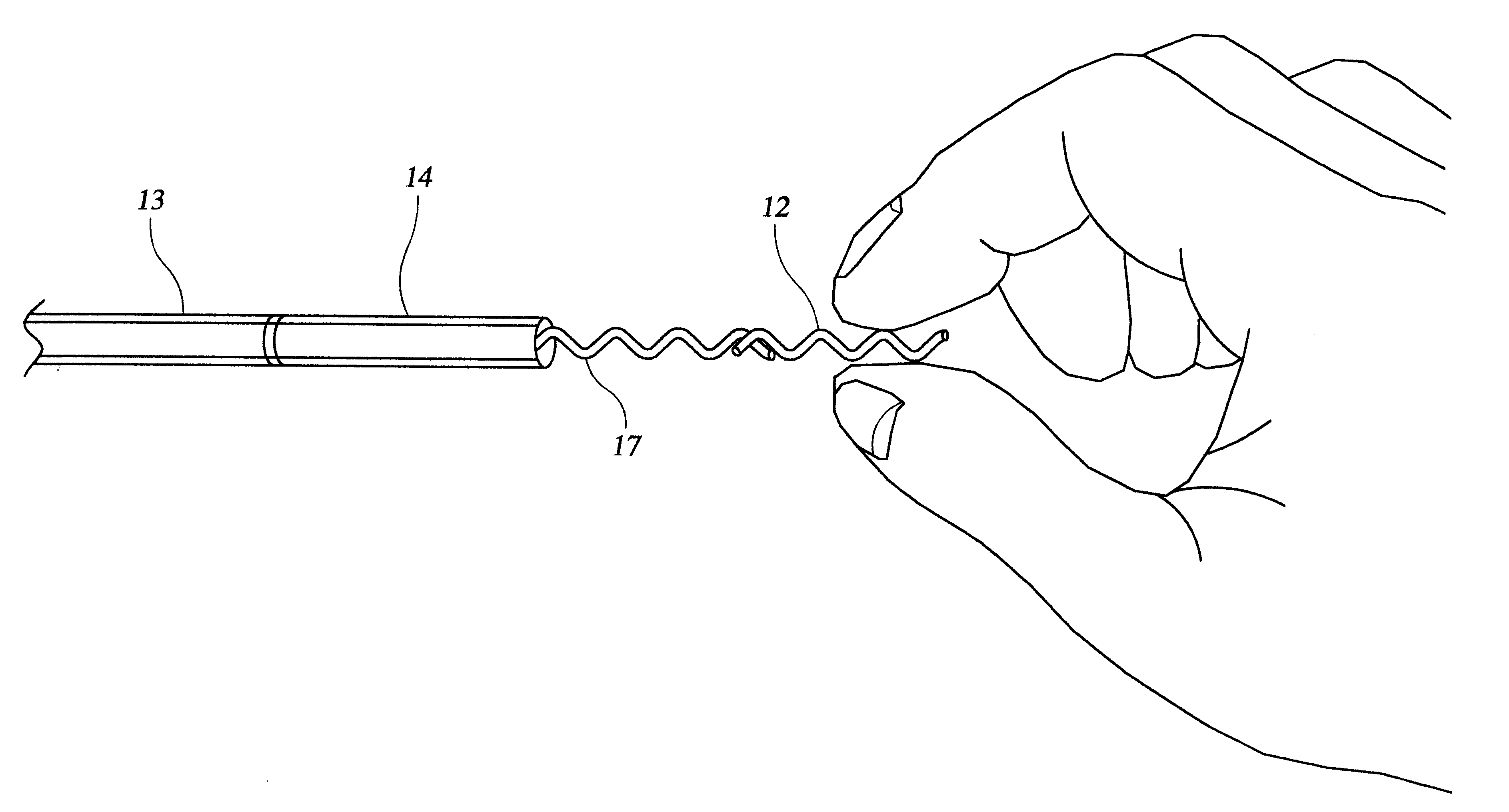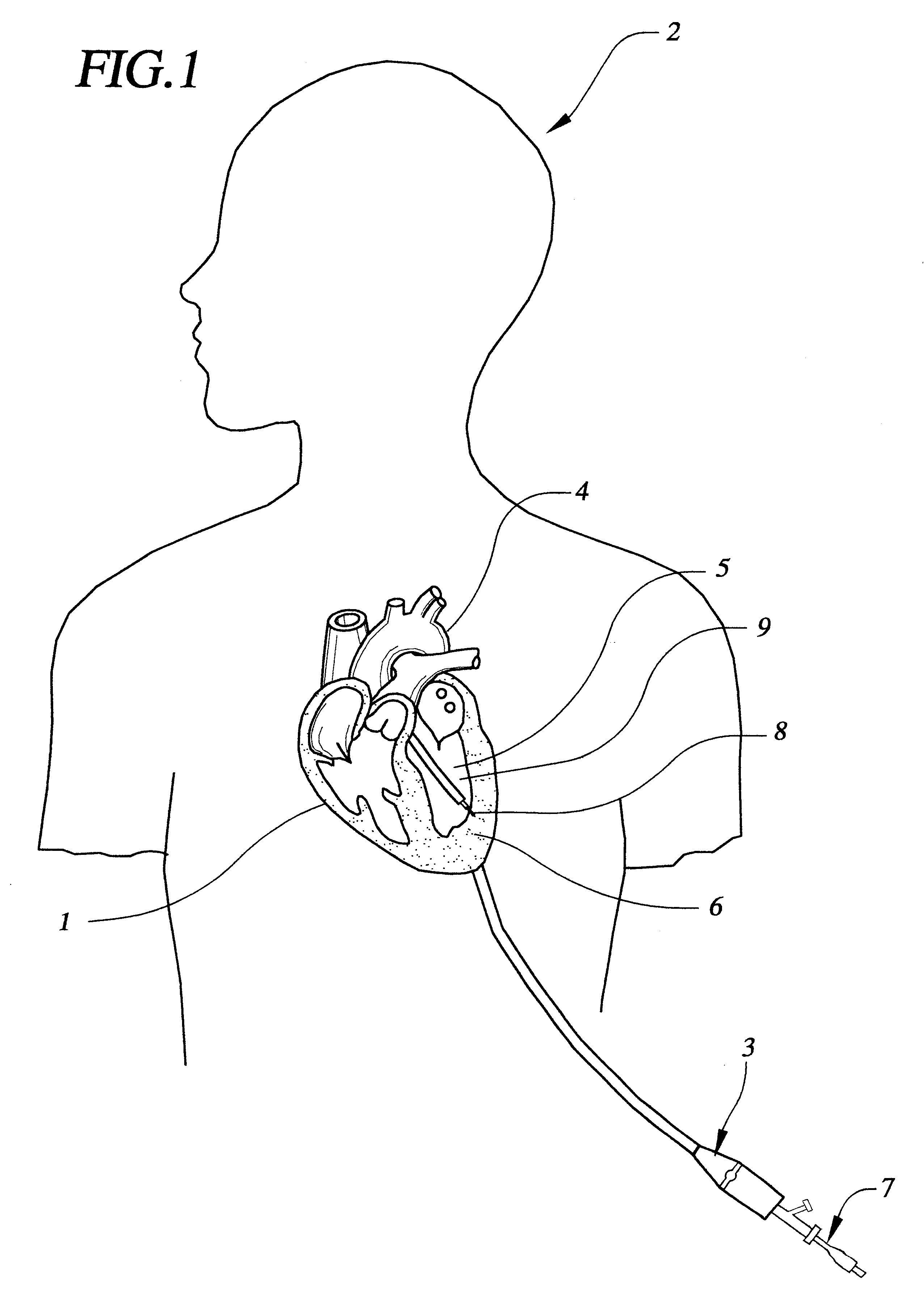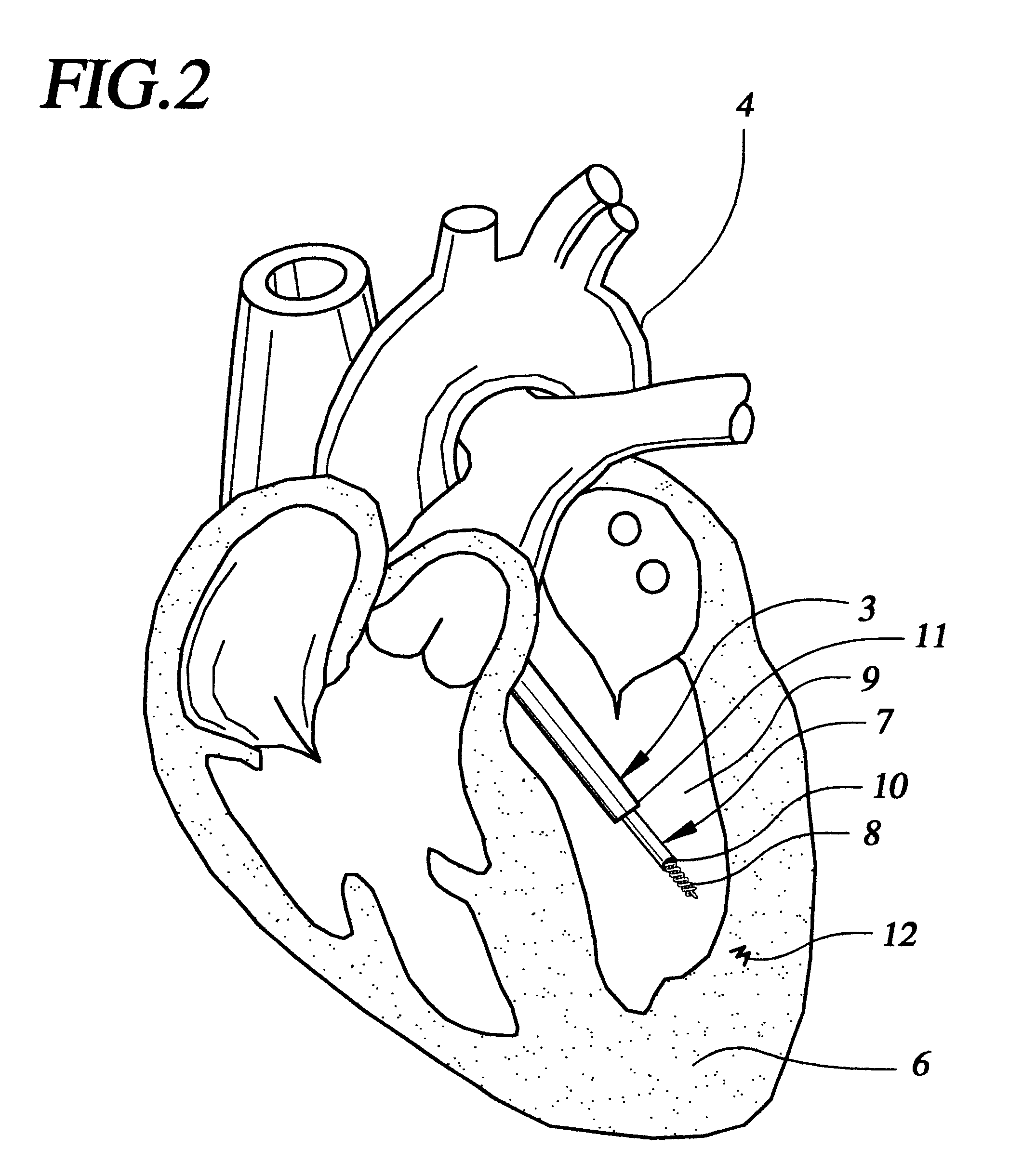Implant delivery catheter system and methods for its use
a catheter and implant technology, applied in the field of site-specific delivery of therapeutic agents, can solve the problems of severe chest pain, impaired cardiac function, and damage to the affected tissu
- Summary
- Abstract
- Description
- Claims
- Application Information
AI Technical Summary
Problems solved by technology
Method used
Image
Examples
Embodiment Construction
FIG. 1 shows a sectional view of the heart 1 within a patient 2. A steerable guide catheter system 3 is placed within the patient, having been percutaneously inserted into an artery such as the femoral artery, and passed retrograde across the aorta 4 and into the left ventricular chamber 5. Steerable guide catheter 3 is advanced through the patient's vasculature into the left ventricle in order to target a region of the heart wall 6 for delivery. An implant delivery catheter 7 with a fixation element 8 has been inserted through the guide catheter, so that the distal tip of the implant delivery catheter and the fixation element are proximate the target region of the heart. Once oriented toward a region of the heart wall 6 within, for example, the left ventricle wall 9, the centrally located implant delivery catheter 7 is advanced into the heart wall 9 and fixed to the heart tissue by means of the fixation element 8. As described below, the catheter shown in FIG. 1 is different from t...
PUM
 Login to View More
Login to View More Abstract
Description
Claims
Application Information
 Login to View More
Login to View More - R&D
- Intellectual Property
- Life Sciences
- Materials
- Tech Scout
- Unparalleled Data Quality
- Higher Quality Content
- 60% Fewer Hallucinations
Browse by: Latest US Patents, China's latest patents, Technical Efficacy Thesaurus, Application Domain, Technology Topic, Popular Technical Reports.
© 2025 PatSnap. All rights reserved.Legal|Privacy policy|Modern Slavery Act Transparency Statement|Sitemap|About US| Contact US: help@patsnap.com



